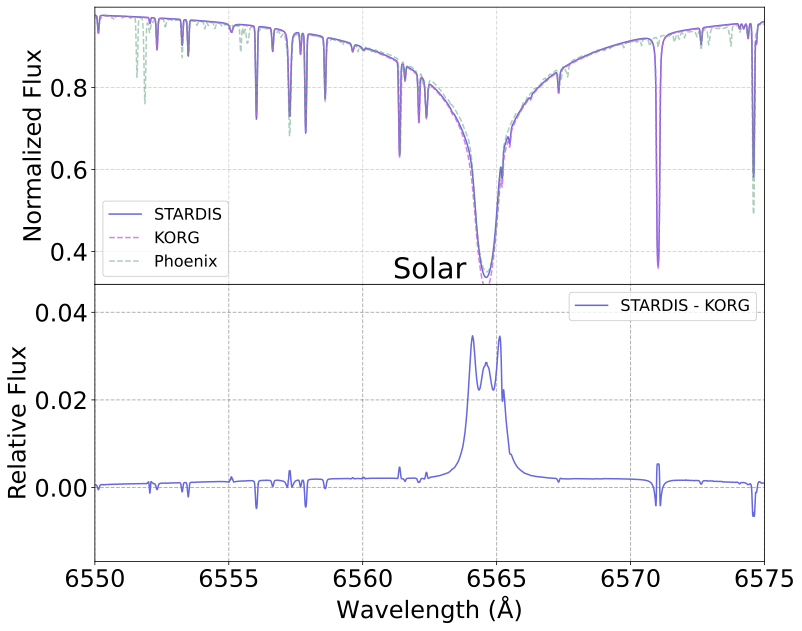We are excited to announce the release of STARDIS, a new 1D stellar spectral synthesis Python code with a detailing manuscript published in The Astrophysical Journal. STARDIS is a modular, open-source radiative transfer code capable of spectral synthesis from near-UV to IR for FGK stars. Built on the TARDIS infrastructure and written in Python—one of the most used languages in astronomy—STARDIS is intended to be approachable for current and future astrophysicists.

The code performs three major computational steps: solving the plasma state (molecular, ionization, and excitation balances), calculating wavelength-dependent opacities including continuum and line sources with sophisticated broadening treatments, and solving the radiative transfer equation through ray-tracing to produce synthetic stellar spectra. Validation against established codes like KORG shows excellent agreement, typically within 3% for most spectral features, making STARDIS a reliable tool for stellar abundance analysis and spectroscopic studies.

